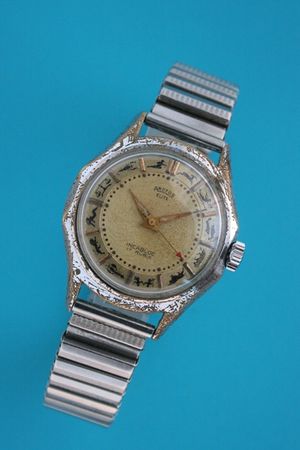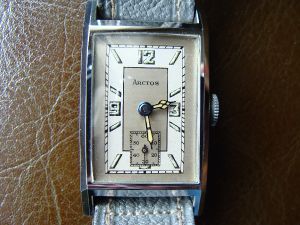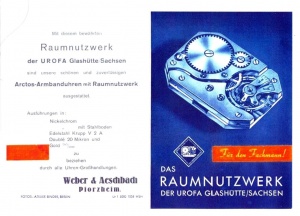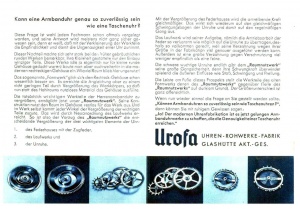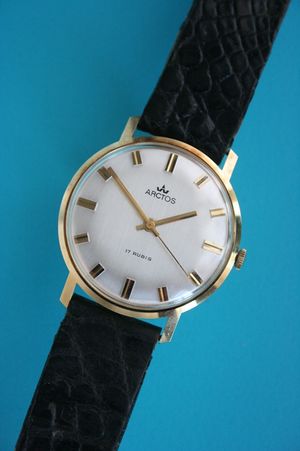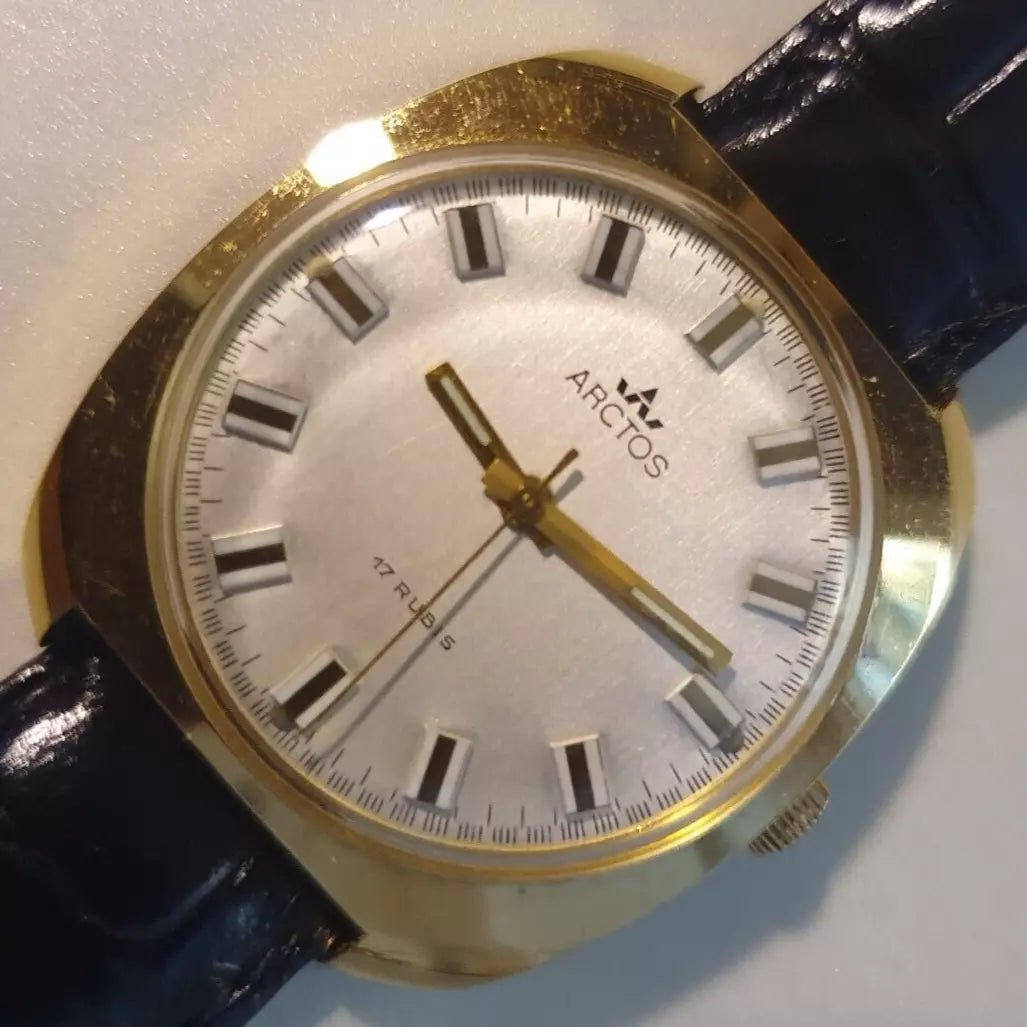
Arctos / Philipp Weber Age determination in the timeline - Arctos Elite
Share
Philipp Weber Uhrenfabrik GmbH & Co. KG
German watch manufacturer
In 1923, Philipp Weber from Pforzheim founded a reassembly workshop together with the watch technician Jacob Aeschbach.
In order to be able to offer watches in larger quantities at reasonable prices, Philipp Weber founded the case factory Rentschler&Co (REWA) with the technician Wilhelm Rentschler in 1932. In the same year he acquired a 10% stake in Uhren Rohwerke Fabrik GmbH Glashütte and later other company shares.
From 1941, Weber was the sole owner of Philipp Weber Uhrenfabrik GmbH & Co. KG . After the wartime destruction and reconstruction in 1947, he traded under the name "Arctos Uhrenfabrik Philipp Weber KG." For his Arctos Elite men's wristwatches, he used the movement developed by Zyska with Caliber 25 (Kurtz Glashütter Tradition) featuring a Breguet hairspring and a central second hand (Caliber 251 with a small second hand) in Tutima quality. Later, movements from various German ebauchee manufacturers and movements from the Swiss ebauchee industry Ebauches SA were used for Arctos Elite.
-
1923–1945: Founded on April 1, 1923, by Philipp Weber and Jakob Aeschbach as Weber & Aeschbach; officially known as Arctos from 1931
-
From 1947: Reconstruction in Pforzheim, renaming to Arctos-Uhrenfabrik Philipp Weber
-
1956: Presentation of the innovative world time clock “Arctos Horometer” at the Hanover Fair – equipped with Felsa automatic calibers (e.g. Felsa 790)
-
1971: Arctos is the first German quartz wristwatch to be launched
-
1982: German Defense Minister commissions Arctos to produce chronographs – later NATO standard
-
1994: Withdrawal from the market due to quartz watch competition
-
2002–2004: Re-establishment as “Arctos Präzisionsuhren eK”, focus on military and outdoor models (NATO, Diver, GMT, etc.)
Typical signs of age of your watch
-
Vintage models (1923–1960s)
-
Movement image: Manual winding or early automatic (e.g. Felsa 790) in the 1950s
-
Design: Classic, possibly gold-plated; e.g., "Parat" or "Osco" caliber from the 1950s
-
-
Quartz era (from 1971)
-
Characteristics: Quartz movement, metal case, often simpler design
-
E.g. field and diving watches with PUW movements from the 1970s
-
-
Military watches / NATO style (2004–present)
-
New beginning with robust models such as NATO Field Watch, Marine Diver and GMT
-
Modern materials, often ETA movements or quartz
-
Source: WatchWiki, AI

